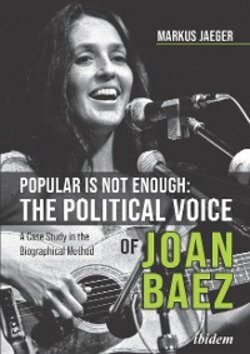Читать книгу Popular Is Not Enough: The Political Voice Of Joan Baez - Markus Jaeger - Страница 12
1.5 A Critical View of a Critical Theorist: How a Bad Frankfurt Pupil Can Still Be Politically Active
ОглавлениеAlthough Theodor W. Adorno can certainly be called an outstanding intellectual of the 20th century, he was “[…] a troubling figure […]” (Paddison 2), who evoked ambivalent reactions in the fields of philosophy, sociology and musical theory. Beside his often underestimated work as a composer and his lifelong passion for social research, he is most famous for his elaborations as a philosopher. Paddison concludes in characterizing Adorno’s intricate theoretical work with yet another hint at the significance of interdisciplinary work (as pointed out in chapter 1.1): “[…] the interdisciplinary character of Adorno’s work is all-pervading, even in those texts which, on one level, seem straightforwardly ‘musical’ […]” (Paddison 16). One essence which can be attached to most of his interdisciplinary work is an incisive commentary on politics. His membership at the famous Frankfurt Institute for Social Research, which was founded in 1923, was just one example of this kind of political focus. Paddison describes the aim of the Frankfurt Institute and points out the political tenor in Adorno’s lifelong work:
The Institute, which was initially independent of the university, operated as a kind of community of scholars, taking an interdisciplinary approach to current social issues of importance. The fundamental of their shared concerns was the rise of Fascism in Europe and of authoritarianism in general […] (Paddison 7).
These straightforwardly political concerns were delivered by Adorno in passionate analyses of “[…] musical models in both the classical and the popular or light music traditions […]” (Witkin 2). Mechanisms (form and/or content) in the creation of artifacts (classical or popular) for him are comparable to mechanisms in society. This is one reason why an interpretation of Baez’s political dimension of her work as a popular singer under the influence of Adorno’s theory can be a fruitful intellectual attempt although Adorno most probably would have accused Baez of trying to be manipulative. Witkin summarizes Adorno’s reason for disseminating his attitude on popular culture’s attempt to stultify its consumers:
His rejection of music ranging from Stravinsky to Louis Armstrong was not based upon the fact of their popular appeal nor their power to stimulate emotion […]; it was, rather, based upon his belief that such music was ‘manipulative’, that it colluded in the weakening and undermining of the subjects it appealed to, that its claim to spontaneity or genuine expression was untrue […] (Witkin 2-3).
Baez’s artistic and political efforts differ from Adorno’s theoretical work and his “[…] vast speculative pessimism […]” (Said in Witkin 10) not only in regard to this accusation of lacking legitimate artistic allowance. The most perceptive differences between the theoretician/philosopher and the activist/singer can be exposed, because they worked in different times. The last decade in the life of Theodor W. Adorno—the 1960s—was the first decade in the career of Joan Baez. An undeniably similar aversion to any form of authoritarianism and an interest in the question of how problems of society could be defined and possibly be solved (plus the relationship of this form of interest to artistic expression), however, can be traced in the work of both Baez as well as Adorno, who most lengthily discusses the relationship between art and society in his study Aesthetic Theory, posthumously published by his widow.
The following pages summarize the most significant similarities and differences between the work of Baez and the aesthetic theory of Adorno. A brief philosophical outline of the relationship between society and art in Adorno’s theory heads a short synopsis of the concept he and his colleague Max Horkheimer coined for what they describe as the Culture Industry and culminates in an explanation of Adorno’s critical attitude towards politically engaged art. As a next step, critics of Adorno come to word, in order to disapprove of the passiveness of his elaborations. Despite Adorno’s skepticism about popular culture and politically engaged art, a closer analysis of the passive nature of his theoretical explanations serves to prove the significance of an activist like Joan Baez, who uses her artistic work in order to support political initiatives—without necessarily turning this kind of activism into an ideological instrument keeping authoritarian mechanisms in society alive; an accusation in the writings of Adorno which he puts on every politically engaged artist in a generalizing manner (see also Sauerland 3). Although he critically exposes doubtful dimensions of the principle of l’art pour l’art (art which is created for art’s sake only), he is not willing to accept the affiliation of artistic expression and political contexts.
